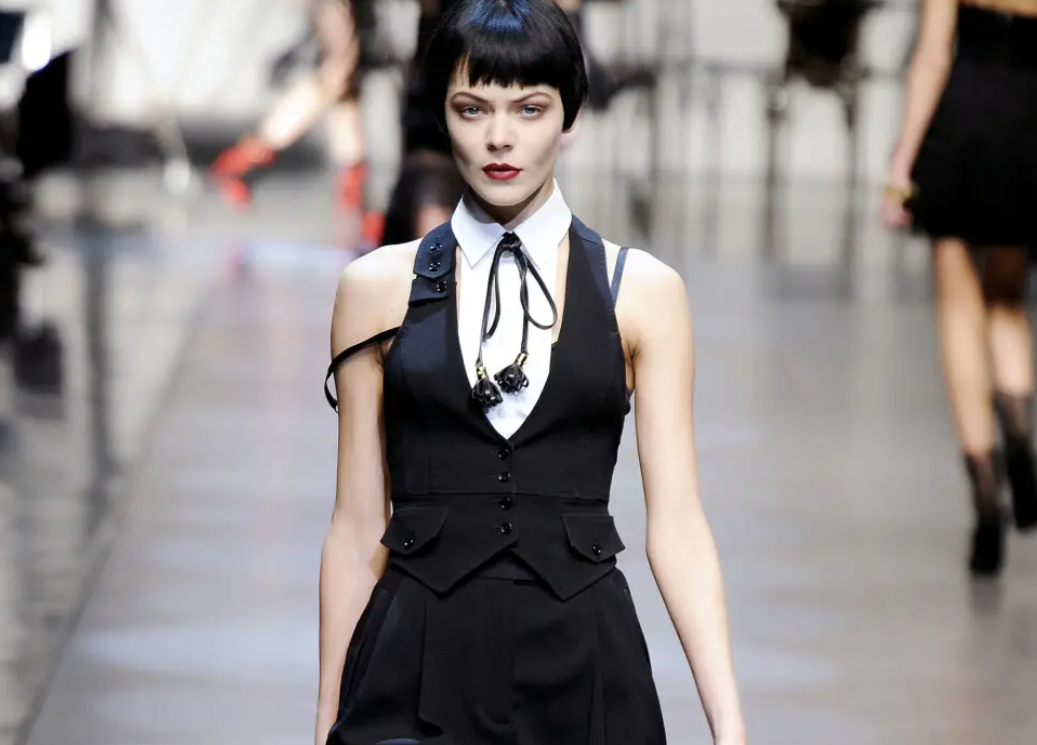
People often refer to the 60s as the "swing era", especially in the field of fashion, its influence is more profound and unique. Jackie Kennedy, with her simple silhouettes and pink colors, created a minimalist style for the first lady and became a fashion icon.
At the same time, Mary Quant led a fashion revolution, leading models to cut their hair short, trim it into stylish five-part haircuts like Vidal Sassoon's, and boldly raise the hemline, making the miniskirt a global sensation and the focus of the fashion world.
In addition, a group of designers who are passionate about the space race also contributed their unique ideas. Their futuristic space-style dresses, full of the vision of the unknown world and the spirit of exploration, have injected new vitality into the fashion industry. In the counterculture, peace and love became the supreme beliefs.
Hippie fashion, with its free and casual style, influenced the dress choices of an entire generation and became a force to be reckoned with in the fashion industry. However, these are just the tip of the iceberg of 60s fashion.
Here's a quick look back at the decade.
Women's fashion of the 1960s: miniskirts are comingThroughout the history of fashion, women have never had their knees exposed. Even the infamous showgirl hemlines of the '20s covered the knees. In 1947, Christian Dior lowered the hem of the skirt, and over the next 15 years, the length of the skirt gradually increased. While fashion historians date 1964 as the birth year of the miniskirt, Cristobal Balenciaga designed the sack dress as early as 1957 and 58.
So was Mary Quant, as is widely believed, the inventor of the miniskirt?
The answer is not simply yes or no. In fact, it was a lace dress she designed in 1964, and the approachable price of her brand Quant, that really made the miniskirt fashion trend popular.
Mary Quant's low-cost brand, Mary Quant's Ginger Group, has contributed greatly to the young craze for short skirts. However, it is worth noting that the short skirt style only gradually gained wide acceptance and adoption in the following years. Until the end of this decade, the style of short skirts has developed to the level of mini skirts, the degree of leg exposure is high, and even the need to replace the traditional thin stockings with tights.
The rise of youth
The youth boom marks the arrival of fashion's new Muse
There are more than 90 million young people in the United States aged 24 and under, a vast population that has spawned countless dreamers and doers.
The haute couture of the 1950s was gradually marginalized and replaced by a group of young, legless women who immersed themselves in the rhythms of rock and roll (e.g., The Beatles, The Who!). And are happy to invest their limited income in disposable clothing designed for the moment. This trend has led to the rise of "fast fashion", with paper dresses and synthetic fabrics made of cellulose becoming super-hot items in the fashion industry.
Models such as Twiggy, Jean Shrimpton and Penelope Tree, with their unique charm, perfectly interpret the spirit of this young wave.
Synthetic fibers lead the fashion trend
The new fibers are proving popular
In 1960, the United States formally enacted the Textile Fiber Product Identification Act (referred to as the "Textile Act"), which mandated that fashion brands clearly list the fiber content of their products, especially for emerging fibers.
In this context, new fibers such as Perspex, PVC, polyester, acrylic, nylon, rayon and Spandex have sprung up, and they are seen as revolutionary developments in the textile industry. The biggest beneficiaries of these new textiles are undoubtedly ready-to-wear brands.
They not only meet the young people's pursuit of fashion, but also meet the urgent needs of families and professionals for convenient, no ironing, wash and wear clothes. The shift marks a new era for fashion.
The term "hot ticket", in the context of theater, refers to a valuable voucher that allows you to easily enter the city's hot theater. However, in the field of textiles and clothing, what we call "hot tickets" also radiates success, but for a very different purpose.
This "hot ticket" is cleverly set or sewn onto each piece of American-made clothing, revealing not only the material of the garment, but also the composition of each fiber.
It lists percentages in detail and clearly identifies the names of the fibers - names that might have sounded sci-fi or lab-stamped in the past, such as polyester, acrylic, triacetate, and so on. Some fabrics are made entirely of natural fibers, while others are made entirely of synthetic fibers; More commonly, there are mixtures that blend natural and synthetic fibers, each with its own unique strength and properties, giving the wearer a rich variety of choices and experiences.
Jacqueline look

